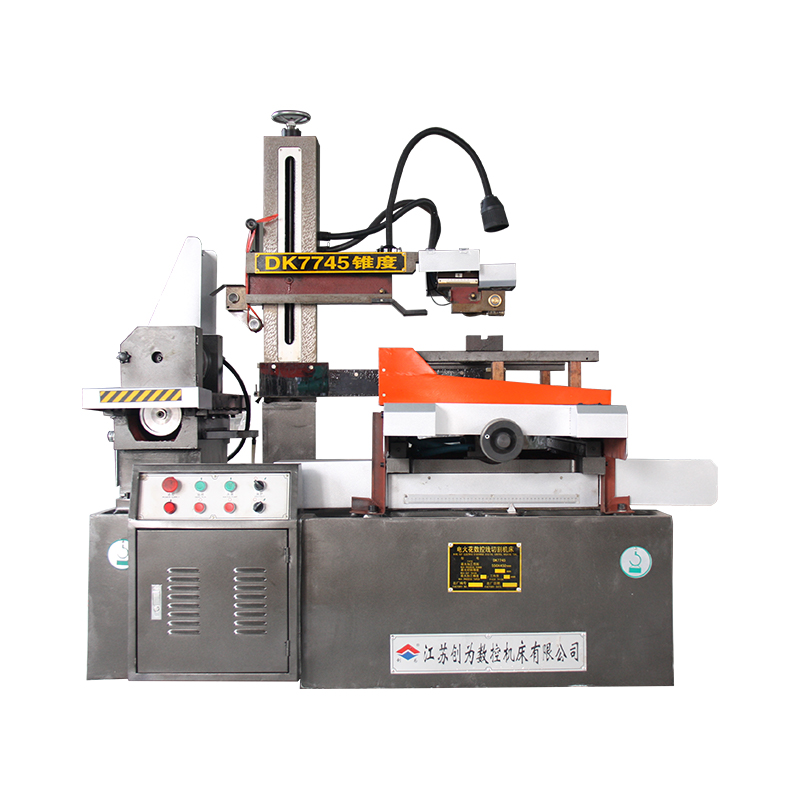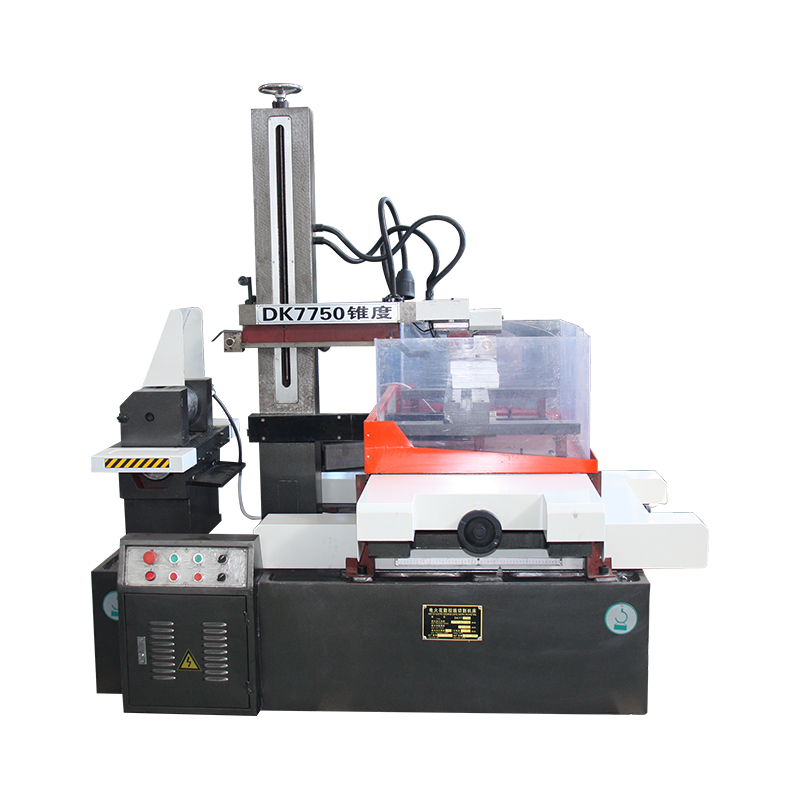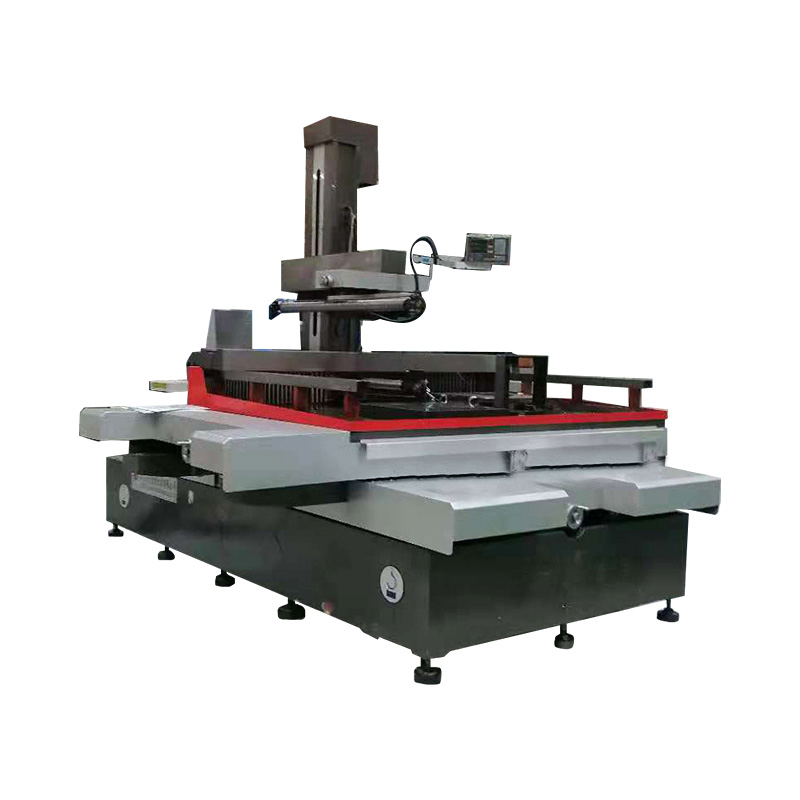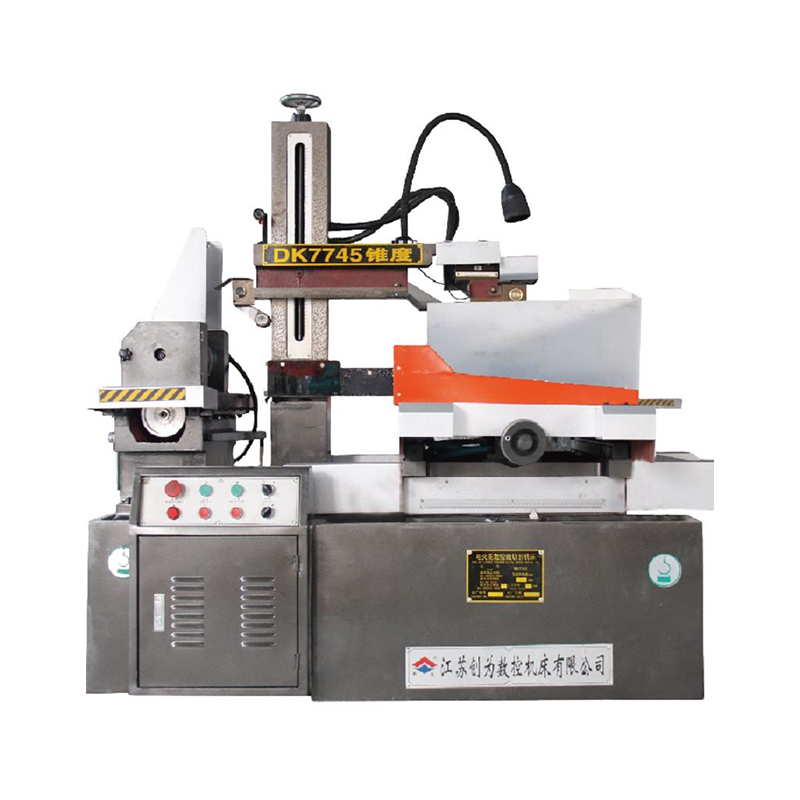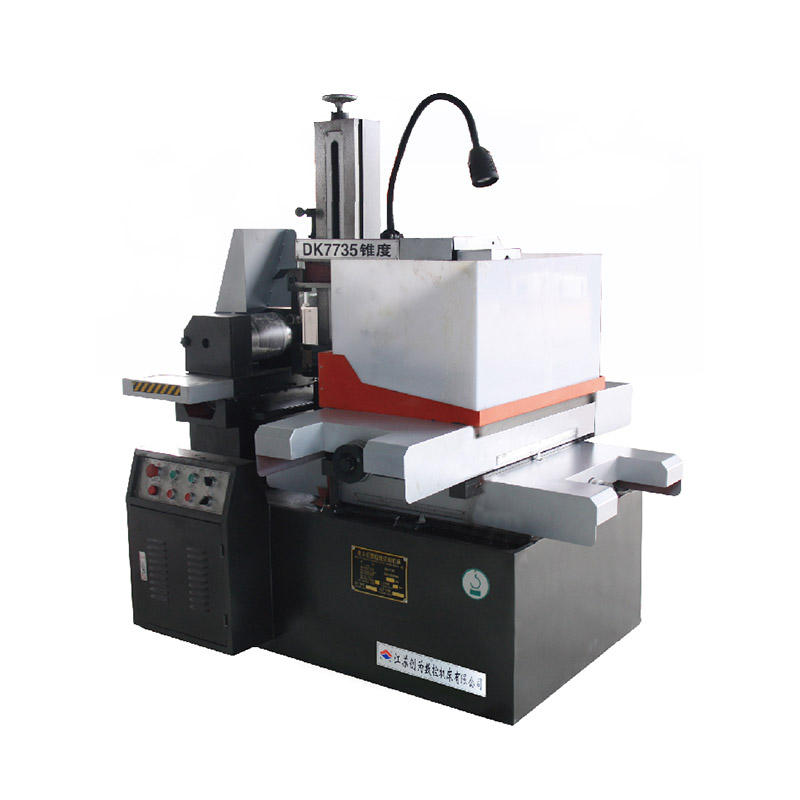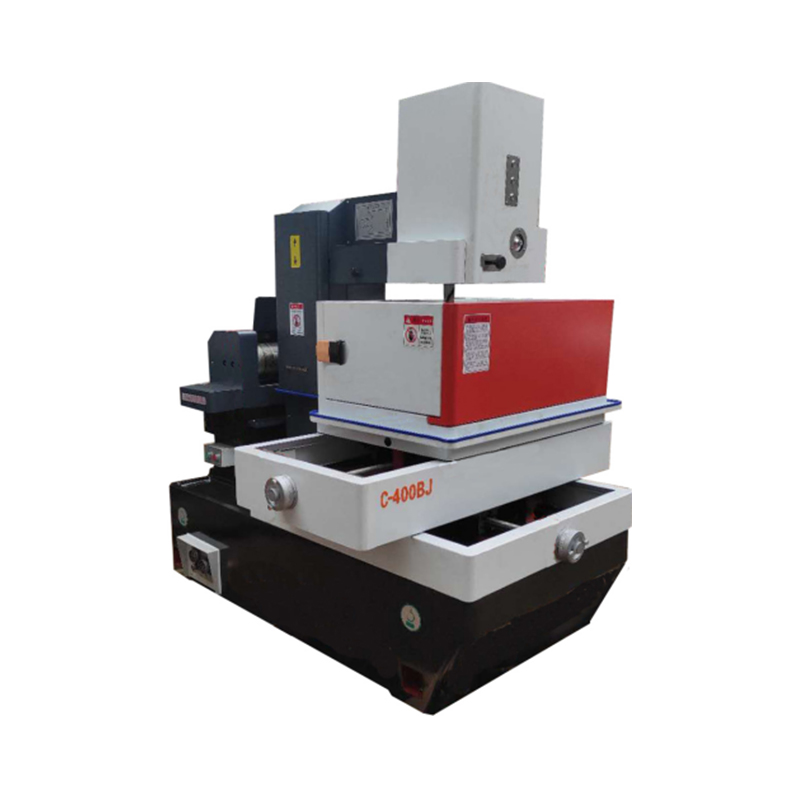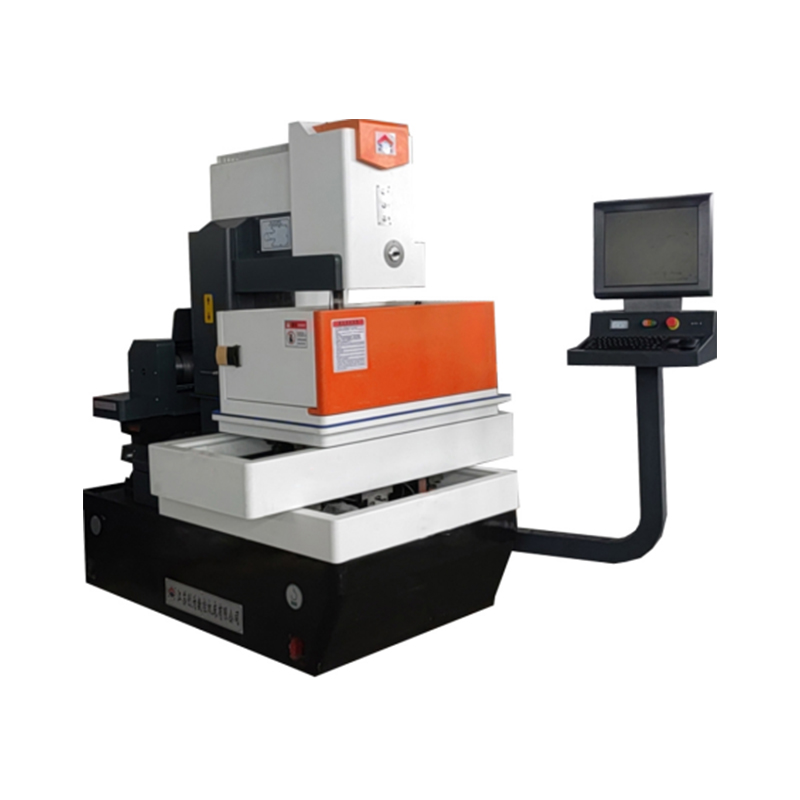CNC EDM Medium Speed Wire Cutting Machine: Precision Engineering for Modern Manufacturing
 2025.08.01
2025.08.01
 Industry news
Industry news
In the evolving world of precision machining, CNC EDM Medium Speed Wire Cutting Machines stand as a key technology for shaping complex and highaccuracy components. These machines combine computer numerical control (CNC) with electrical discharge machining (EDM) to achieve detailed, intricate cuts in hard materials—such as tool steel, titanium, carbide, and other conductive metals. Unlike conventional cutting tools, wire EDM does not rely on physical contact, making it ideal for parts where fine tolerance and smooth surfaces are essential.
What Is a CNC EDM Medium Speed Wire Cutting Machine?
A CNC EDM Medium Speed Wire Cutting Machine is a type of electrical discharge machining system that uses a thin metal wire—often brass or molybdenum—as an electrode to cut through metal workpieces. The cutting process is controlled via CNC programming, which allows for extreme accuracy and repeatability.
The term "medium speed" refers to the cutting wire’s travel speed, which is typically slower than that of highspeed EDM machines but faster than traditional slowspeed models. Medium speed machines offer a balance between machining speed, accuracy, and costefficiency, making them suitable for a broad range of applications.
How the Machine Works
The process behind a CNC EDM medium speed wire cutting machine involves a series of rapid electrical discharges between the wire electrode and the workpiece. These discharges generate localized heat that melts and vaporizes tiny sections of the material without direct contact. Key steps in the operation include:
1. Programming: The desired cutting path is programmed into the machine using CAD/CAM software or Gcode.
2. Workpiece Setup: The metal part is clamped onto the machine table and submerged in a dielectric fluid, usually deionized water.
3. Wire Feeding: A spool of thin wire (e.g., 0.15–0.25 mm in diameter) feeds continuously through upper and lower guides.
4. Discharge Generation: As voltage is applied between the wire and workpiece, sparks erode the material.
5. Wire Movement: The wire moves in accordance with the programmed path to shape the part.
6. Cooling and Flushing: The dielectric fluid cools the area, removes debris, and prevents arcing.
Unlike traditional machining, there are no cutting forces, which reduces tool wear and allows for the creation of delicate and complex geometries.
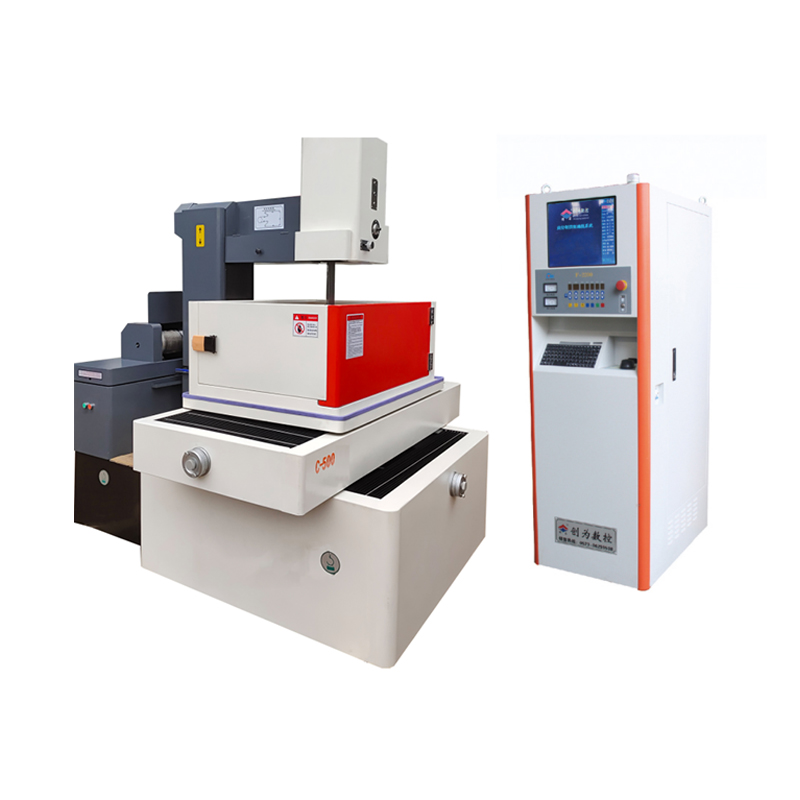
Key Features of CNC EDM Medium Speed Wire Cutting Machines
These machines are known for several important characteristics that make them indispensable in toolmaking and mold industries:
High Precision: Capable of achieving tolerances within microns, making it ideal for intricate mold components and die parts.
Smooth Surface Finish: Fine finishes can be achieved with minimal secondary processing.
Complex Cutting Capability: Suitable for tight corners, fine details, and multiaxis shapes.
Multiple Cutting Passes: Some systems allow for roughing and multiple finishing passes, enhancing quality and accuracy.
Lower Operational Cost: Medium speed models offer a costeffective compromise between speed and finish quality.
UserFriendly CNC Interface: Modern machines are equipped with touchscreens, 3D simulation, and customizable settings for ease of use.
Applications Across Industries
The versatility and precision of CNC EDM medium speed wire cutting machines make them useful in a wide range of fields:
1. Tool and Die Making
This industry heavily relies on EDM for creating precise dies, punches, and injection molds. The machines help shape steel molds with tight tolerances and sharp corners.
2. Automotive Industry
Wire EDM is used to manufacture components like gears, engine parts, and transmission systems that require high reliability and precision.
3. Aerospace Industry
Aircraft parts made from heatresistant and hard alloys (e.g., titanium) are frequently cut using EDM, ensuring structural integrity and dimensional accuracy.
4. Medical Device Manufacturing
Intricate and biocompatible components for surgical tools, implants, and diagnostic instruments are produced using EDM for smooth edges and exact specifications.
5. Electronics and Microcomponents
EDM wire cutting enables the fabrication of fine features in connector parts, semiconductor molds, and other delicate electronic components.
6. Defense and Energy Sectors
Precision parts in military systems or energy turbines demand extremely tight tolerances and material integrity, which EDM can deliver without causing stress or deformation.
Advantages of Medium Speed Wire EDM
Compared to other machining technologies or EDM speed types, medium speed wire cutting machines offer the following advantages:
CostEfficiency: They use reusable wires (often molybdenum) and consume less energy than highspeed alternatives.
Good Surface Quality: Achievable without extensive polishing or grinding.
Low Tool Wear: No physical contact means the wire electrode does not degrade quickly.
Safe for Delicate Components: Minimal thermal stress makes the process ideal for fragile or thinwalled parts.
Efficient for Small Batch Production: Highly flexible with quick setup, making it suitable for prototype manufacturing and custom parts.
Considerations When Choosing a Machine
When selecting a CNC EDM medium speed wire cutting machine, consider:
Wire Type Compatibility (brass vs. molybdenum)
Cutting Speed and Passes
CNC Controller Capabilities
Repeatability and Resolution
Workpiece Size and Axis Travel
Aftersales support and spare parts availability
Choosing the right machine depends on your production volume, part complexity, material types, and desired finish quality.
Conclusion
The CNC EDM medium speed wire cutting machine plays a vital role in modern precision engineering. Its ability to produce detailed, hightolerance parts with excellent surface finishes—without physical cutting forces—makes it an ideal solution for various industries, from automotive to medical device manufacturing.
By bridging the gap between highspeed efficiency and finedetail accuracy, medium speed wire EDM machines offer manufacturers a costeffective, highperformance tool for demanding applications. As innovation in CNC control and wire technology advances, these machines will continue to shape the future of precision machining with greater speed, accuracy, and flexibility.


 English
English Español
Español
